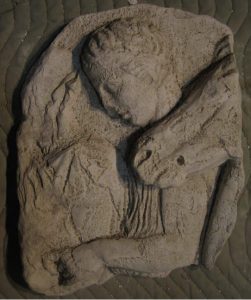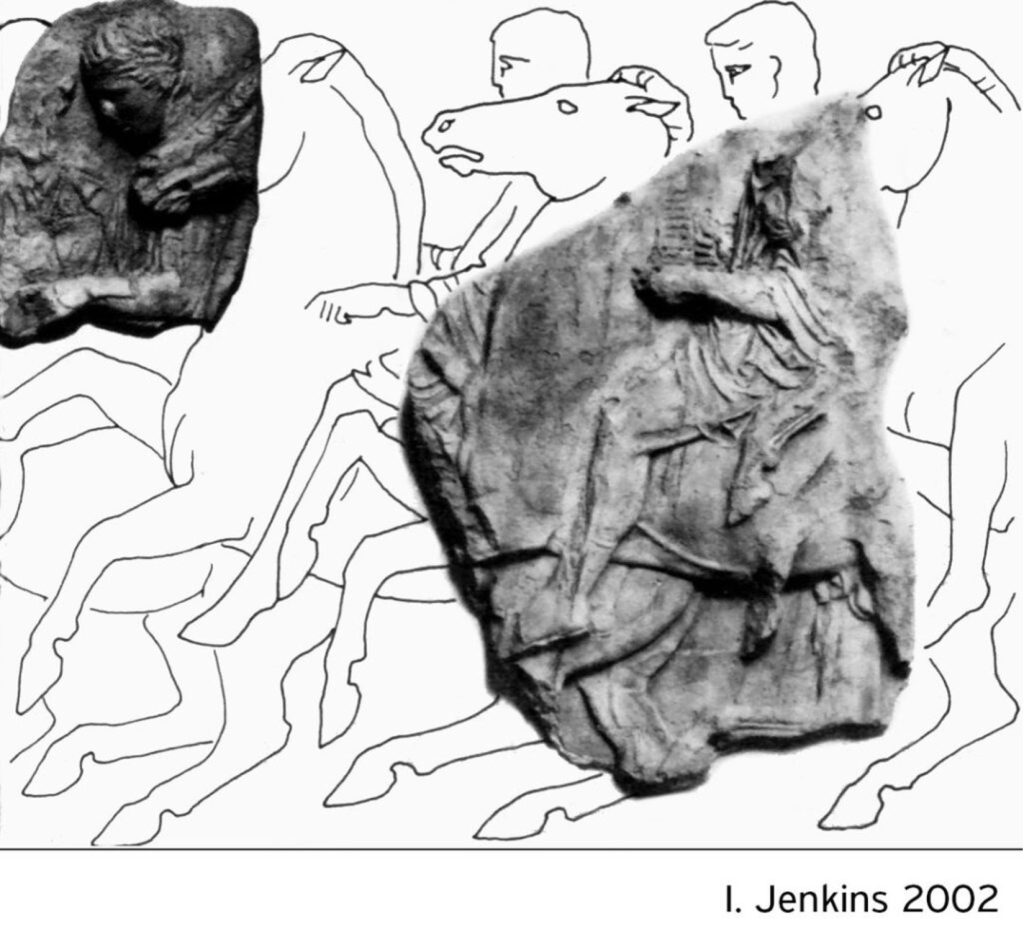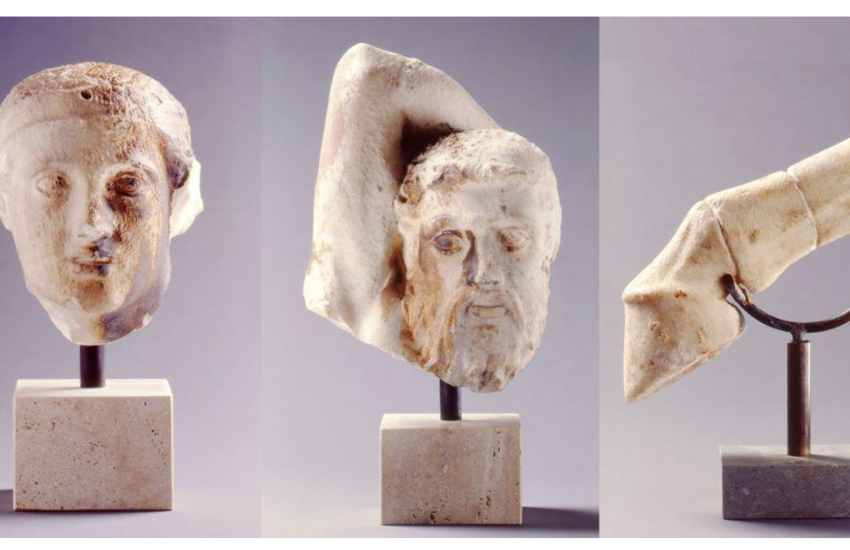Waltzing the Parthenon Sculptures
By GEORGE VARDAS, published for Greek City Times, May 2023.
The international campaign for the reunification of all the surviving Parthenon Sculptures in Athens took another major leap forward in Vienna earlier this month when the foreign ministers of Greece and Austria announced substantial progress had been achieved in returning to Athens two significant sculptural fragments recovered centuries ago from the Parthenon and currently on display in a Viennese art history museum.

In a news conference following bilateral discussions between the two countries, the Austrian Foreign Minister, Alexander Schallenberg, declared that Greece and Austria enjoy an excellent cultural relationship and that he was, therefore, pleased to announce that technical discussions have taken place between the Kunsthistorische Museum and the Acropolis Museum for “mutual loans” of the Parthenon frieze.
Ms Schallenberg added:
“Our common goal is to contribute to the understanding of its universal significance for European cultural heritage. This is a very special case and it is important. It is important beyond the borders of Greece because we all know that this is the cradle of the Parthenon as such. The Acropolis and Athens are the cradle of European democracy. It is for us important … I am very hopeful that talks can move very quickly and the marbles will be on display in Athens”.
For his part, the Greek Foreign Minister, Nikos Dendias, was clearly delighted by the announcement. Noting that both nations have a common desire to raise awareness and to enhance effectiveness, at an international level, in combatting illicit trafficking of cultural goods and in protecting cultural heritage, he added that this highly symbolic gesture may create positive momentum for the return of the Parthenon sculptures from the British Museum.

Dendias noted that the Regional Government of Sicily in 2022 and Pope Francis in January 2023 and returned to Greece parts of the Parthenon Sculptures. It is also worth noting that the first museum to do so was the University of Heidelberg which in 2006 returned a fragment of the frieze.
The grand entrance hall of the Kunsthistorische or Art History Museum in Vienna is announced rather symbolically by a marble sculpture by the Italian neo-classical sculptor, Antonio Canova, depicting Theseus about to defeat the Centaur.

Ironically, in 1815 Canova had visited London to view the Elgin collection of Parthenon sculptures which he described as “celebrated relics of ancient art”. In the letter which he penned to Lord Elgin, Canova spoke of the truth of nature inherent in the sculptural works combined with their choice of beautiful forms.
The sculptures in question are both from the North Frieze of the Parthenon which was extensively damaged by the Venetian forces commanded by General Morosini who laid siege to the Acropolis in 1687 and in trying to defeat the occupying Ottoman Turks lobbed in a round that hit the Ottoman powder magazine stored in the Parthenon and blew the roof off the ancient temple and demolished parts of the structure.

From the rubble opportunists over the ages had the opportunity to steal the spoils of war.
We are, however, fortunate to have the benefit of drawings of the frieze by the French artist Jacques Carrey who visited Athens and made detailed studies of the Parthenon in 1674 before the explosion.
Parthenon North Frieze – Block 9 (IX)
The first of the fragments is from the North Frieze block IX and features the heads of two older, bearded men facing each other. Also known as thallophoroi (bearers of olive branches), they depicted the elders of aristocratic origin who took part in the festive procession in honour of Athena. They wear a cloak wrapped around the lower body and over one shoulder, leaving the right arm and chest exposed.


Apart from the Viennese fragments, the procession of the elders, sixteen in total, continues on the adjacent Blocks of the frieze in the Acropolis Museum.
They are conversationally grouped, some turning towards us and part of a crowd advancing ahead of the chariots. The physical structure of all the figures is strongly idealized but the ideal is subtly modified and in slab X there is a “distinct if muted suggestion of the heavier forms of age” according to the former curator of Greek and Roman gallery in the British Museum, Ian Jenkins in his The Parthenon Frieze (British Museum Press, 1994.
Parthenon North Frieze – Block 35 (XXXV)
Block XXXV shows two horsemen galloping in stride. Originally Block XXXV would depict four horsemen. The Fragment in Vienna is of a draped young horseman in profile proceeding forward with bowed head and lowered gaze.



In Block XXXIV, which was unearthed in around 1843 during the excavation campaigns conducted at the Acropolis, a parade marshall beckons to the oncoming riders as a horseman looks back to check on the progress of his companions. Horsemen and cavalry riders offer artistic variety to the Panathenaic procession and in fact comprise almost half of the entire Parthenon frieze.
The significance of the return of these Parthenon fragments cannot be understated.

Mag. Alexandra Pistofidou, a young activist based in Vienna, is the Founder and President of the Austrian Committee for the Reunification of the Parthenon Sculptures and also a member of the Acropolis Research Group. She was in Athens recently to view the return of the Vatican fragments and spoke of the momentous symbolism in the discussions that are being explored between Athens and Vienna.
According to Alex Pistofidou, Austria and Greece are writing a new chapter: a story of progress, a story of democracy that remains unbroken, and a story of reunification. In her words:
“Over the past two years Austria and Greece have come together to negotiate a once-in-a-generation agreement, building bridges to connect European culture and its people. The unfinished and great task, remaining before us, is to bring back all the Parthenon Sculptures. And, if we are steadfast, the time may come when all the countries and museums that still hold fragments from the Parthenon will also return them.”
Ian Jenkins also wrote that approximately 60 percent of the surviving frieze is in the British Museum whilst the remainder is largely in Athens or dispersed among a number of European collections, including those of Paris, Rome, Palermo, Vienna and Heidelberg.

Well, in light of recent developments, you can now delete the cities of Rome, Palermo, Heidelberg and Vienna from that list. All that remain, as far as is known, outside of the British Museum are sculptural fragments from the Parthenon in the Louvre in Paris and in the National Archaeological Museum in Copenhagen.
And hopefully, they will be next in line.

Angelos Delivorrias, the famous archaeologist and former director of Benaki Museum, in his book The Parthenon Frieze: problems, challenges, interpretations (Benaki Museum) notes that the frieze is justly considered the largest sculpted composition of all time. He adds poignantly:
“But whoever pauses ecstatic before its dismembered parts, even the smallest fragments of its shattered blocks, is carried away not so much by the quantitative as by the qualitative values.”

Ahead of the upcoming elections, the Greek Prime Minister, Kyriakos Mitsotakis, has said his government is exploring a “win-win” solution in the campaign for the reunification of the Parthenon Sculptures currently held in the Duveen Gallery but has also ruled out any deal that would include the word “loan”, restating Greece’s oft-stated view that it will never recognise that these sculptures are legally owned by the British Museum although conceding that Greece has to be constructive and innovative if a solution is to be found.
The terms of the transfer of the two Viennese fragments to Athens have yet to be finalised. Will it be in the nature of a perpetual loan or an outright ‘deposit’ (as in the case of the Palermo fragment) or an unconditional return (Heidelberg and the Vatican)? It is apparent that the diplomatic finesse required to achieve a concluded outcome in this case will need to focus on reciprocal lending and perhaps shared curatorial responsibility, with rare Greek treasures displayed in Vienna to perfect a new and enlightened Hellenic-Austrian cultural partnership.
Only then can we dare to imagine that when these exquisite fragments are finally reunited in Athens, and borrowing from the final verse of Leonard Cohen’s famous song “Take This Waltz” (itself partly set in Vienna), visitors to the Acropolis Museum – on seeing the reinstated Parthenon frieze fragments – will be moved to proclaim:
“Oh my love, oh my love!
Take this waltz, take this waltz
It’s yours now, it’s all that there is.”
George Vardas is the Arts and Culture Editor and is also co-Vice President of the Australian Parthenon Association and a co-founder of the Acropolis Research Group.
Greek City Times,Copyright, 2023


